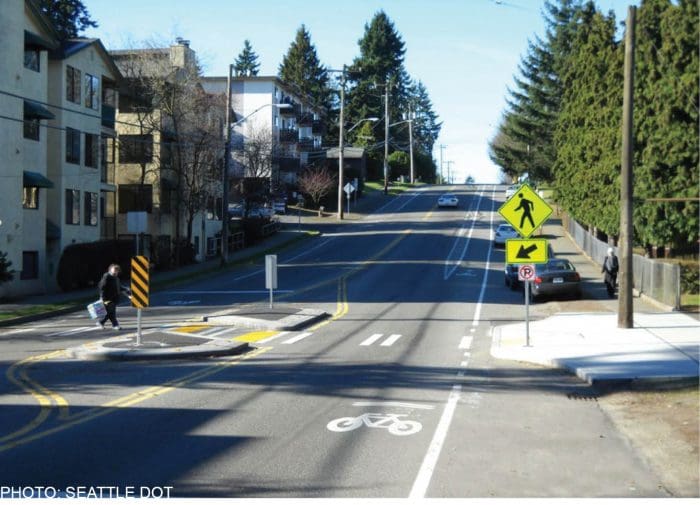As state transportation departments seek to improve system performance, mobility and safety, engineers working in both the public and private sectors are charged with crafting effective solutions within restrictive budget limitations.
Current design guidelines for projects on existing alignment are based on the traditional 20-year approach of adding capacity, which is no longer practical, says Jeff Jones, assistant chief engineer for the Tennessee Department of Transportation and a member of the American Association of State Highway and Transportation Officials (AASHTO) Technical Committee on Geometric Design.
When developing reconstruction projects today, geometric design professionals often encounter physical, fiscal and environmental constraints. As such, design guidance is needed to evaluate the performance or impact of alternative geometric design decisions. “Some of these performance-based criteria help our engineers evaluate their projects with a lesser scope and help them evaluate the other modes that vehicles are sharing the right-of-way with,” he says.

Noting that performance-based design is gaining traction on a national level, Jeff says AASHTO is updating its Green Book guidance about how geometric design for highways and streets should be implemented. AASHTO is looking to NCHRP Report 785, Performance-Based Analysis of Geometric Design of Highways and Streets.
“Going forward, it’s going to be more about evaluating how a multimodal road is going to perform on opening day. Gone are the days of simply verifying a roadway’s functional classification and applying a “Ëœone-size-fits-all’ approach to the application of design standards,” Jeff says.
As Brian Ray, PE, Kittelson senior principal engineer and chair of the TRB Design Section, explained in TR News magazine, geometric design solutions can be developed, assessed and advanced based on their support of the desired outcomes for the project. This can lead to customized solutions and can help guide project decision making. Advances in performance-based methodologies support context-sensitive and practical solutions to meet project needs and to maximize investments.
“As a designer you are still using design criteria and standards, but you have more flexibility,” Brian says. “We are now measuring the success of geometric design, not by what the code says but by the goals we are trying to attain.”
Performance-based guidelines are at the heart of the Montana Department of Transportation’s (MDT) effort to update its Road Design Manual. Julia Knudsen, PE, Kittelson senior principal engineer, said the process began over two years ago and has involved an ongoing dialog between MDT and Kittelson about what information will serve the agency best.
“A really great part of this project was that our work helped spark the conversation within their department, and then MDT figured out how they wanted to include this information in the manual to help their designers,” Julia says.
Damian Krings, PE, MDT road designer engineer, says the department chose to enlist Kittelson’s assistance to ensure its guidance follows the national movement. He says the benefit of performance-based design is that it allows engineers to evaluate the purpose and need of a project and what criteria meets that purpose and need, while also considering operations and safety as key priorities.
In addition, MDT worked with the FHWA to ensure its manual is consistent with federal guidance on performance-based practical design. The FHWA sent a representative to conduct a daylong workshop for MDT staff, ranging from designers to managers.
Krings says the workshop enhanced MDT’s communication with the FHWA. “We’re all in this together and this is the direction they want to go, too,” he says.
